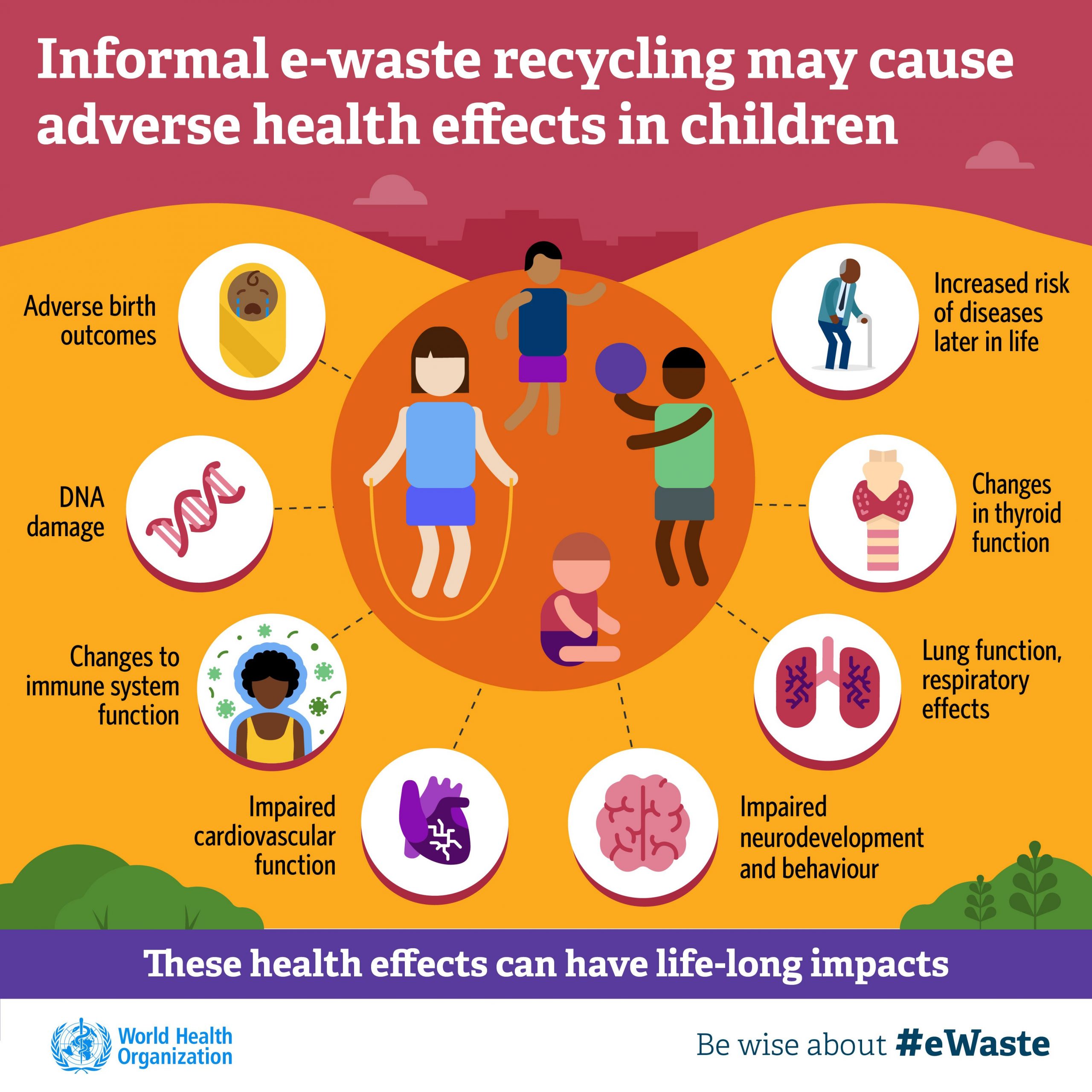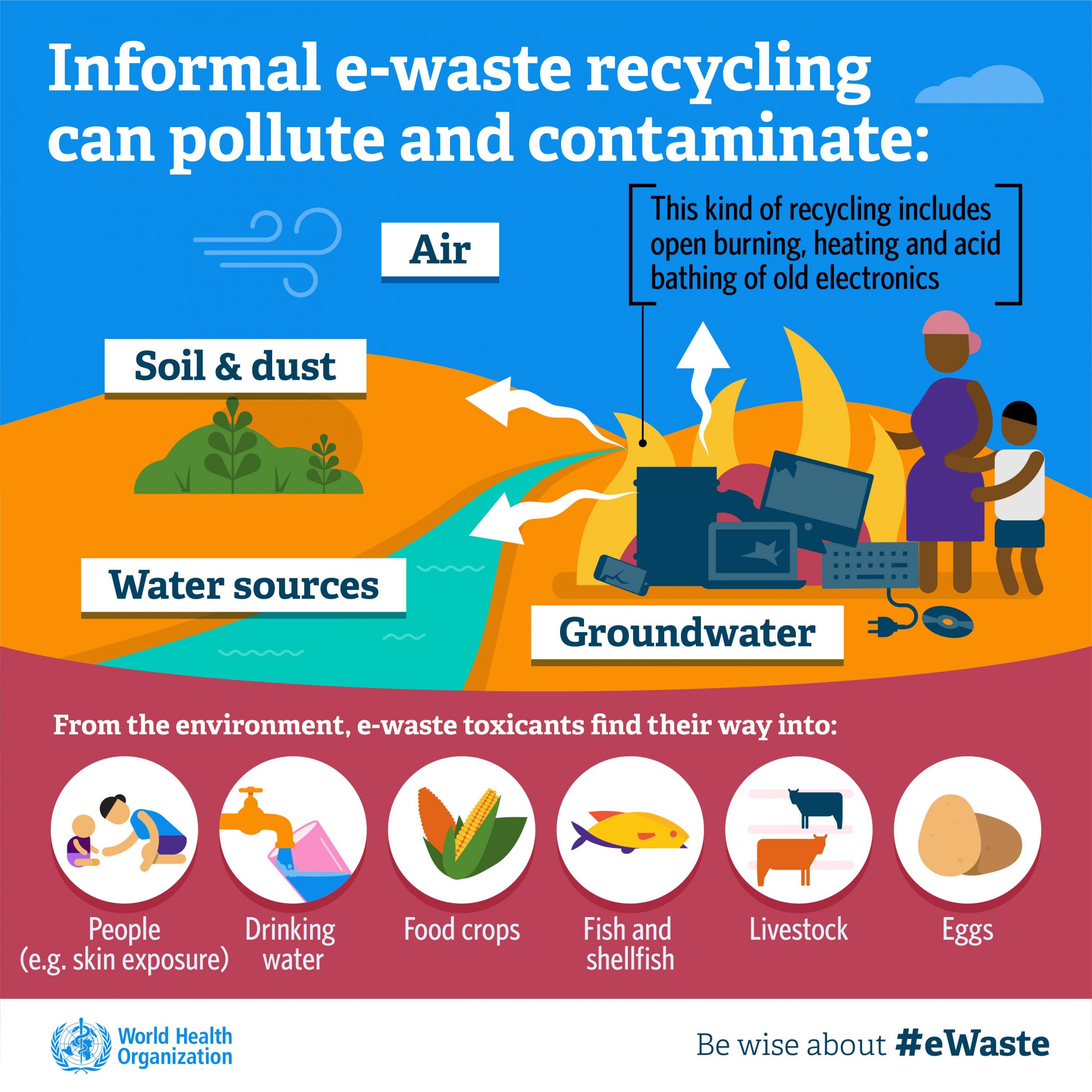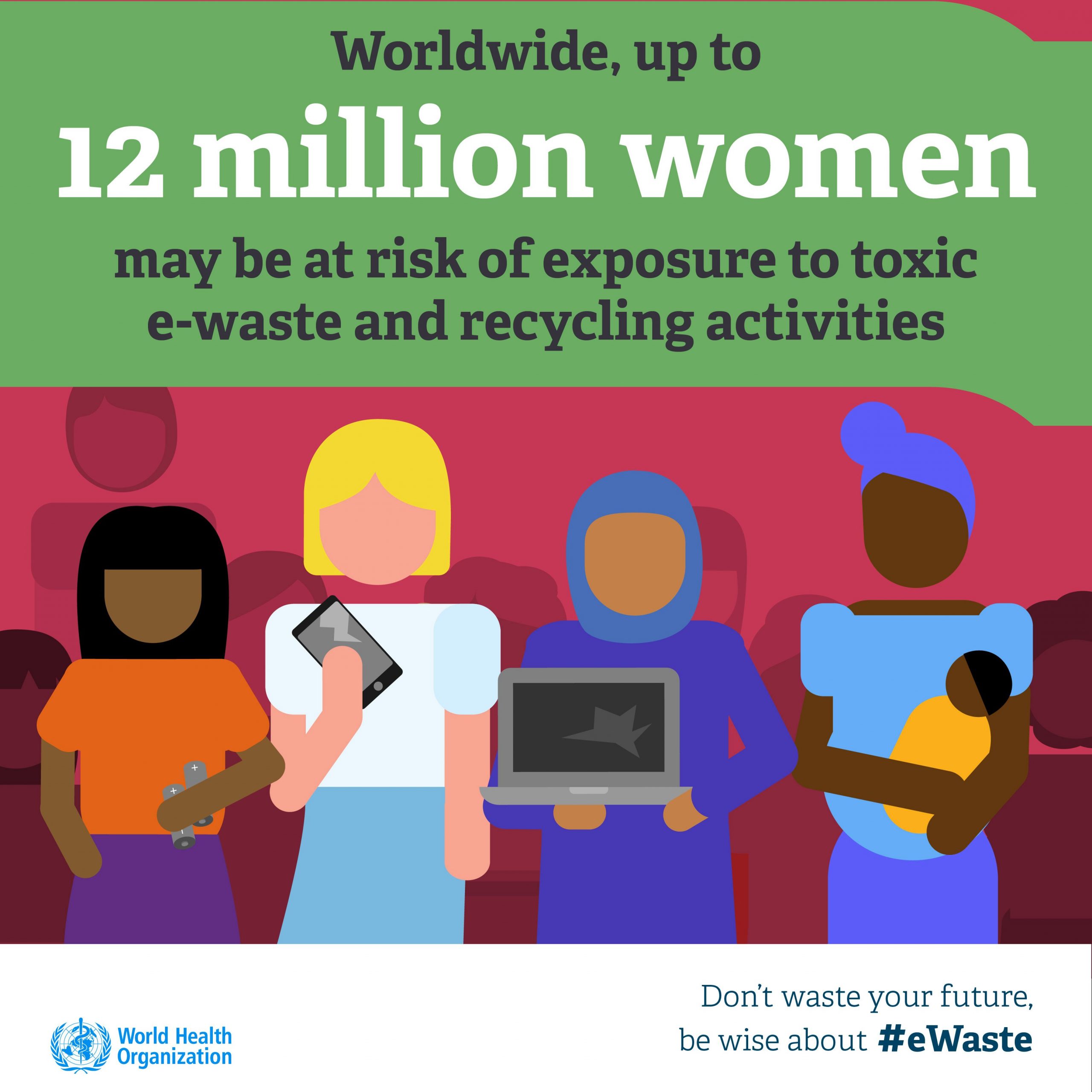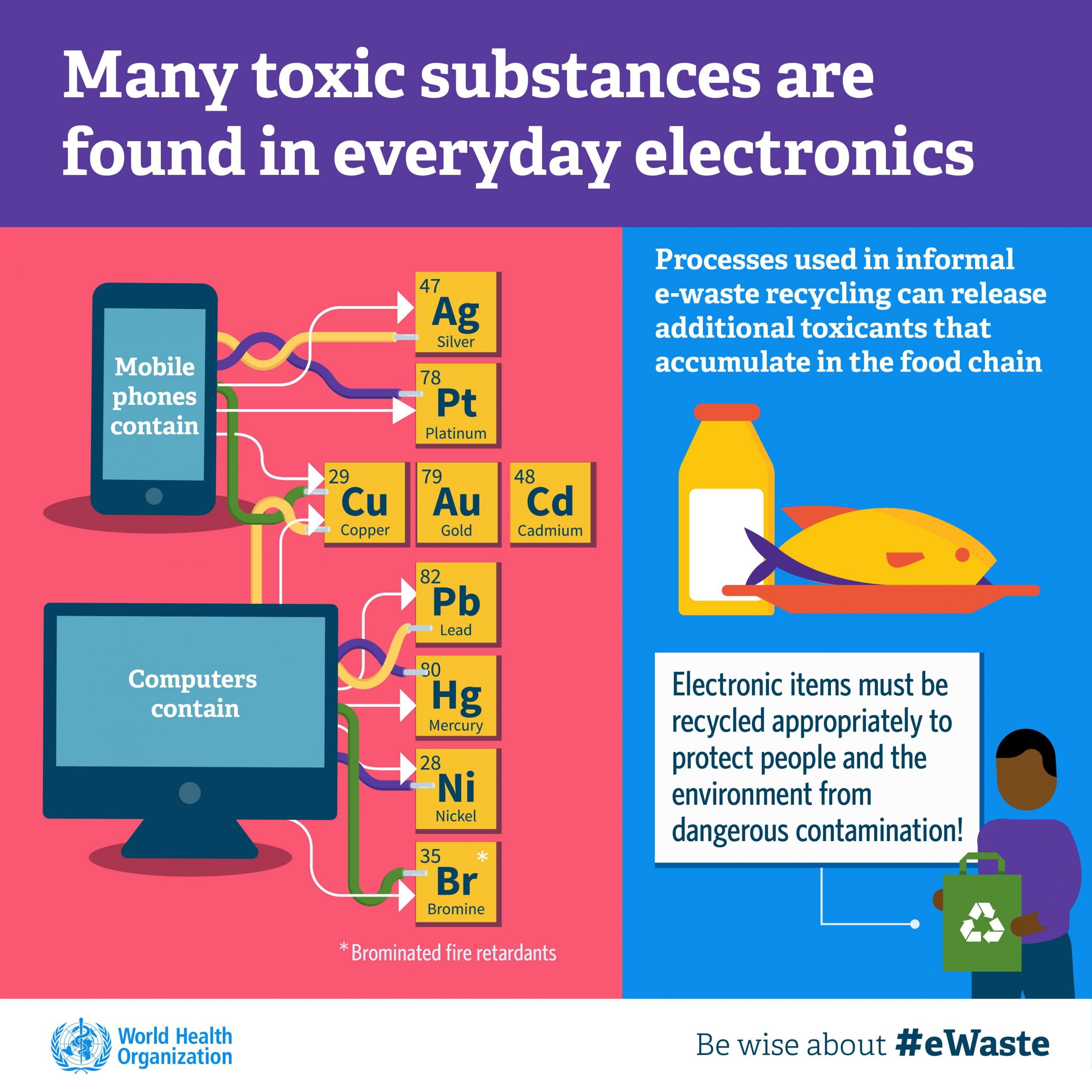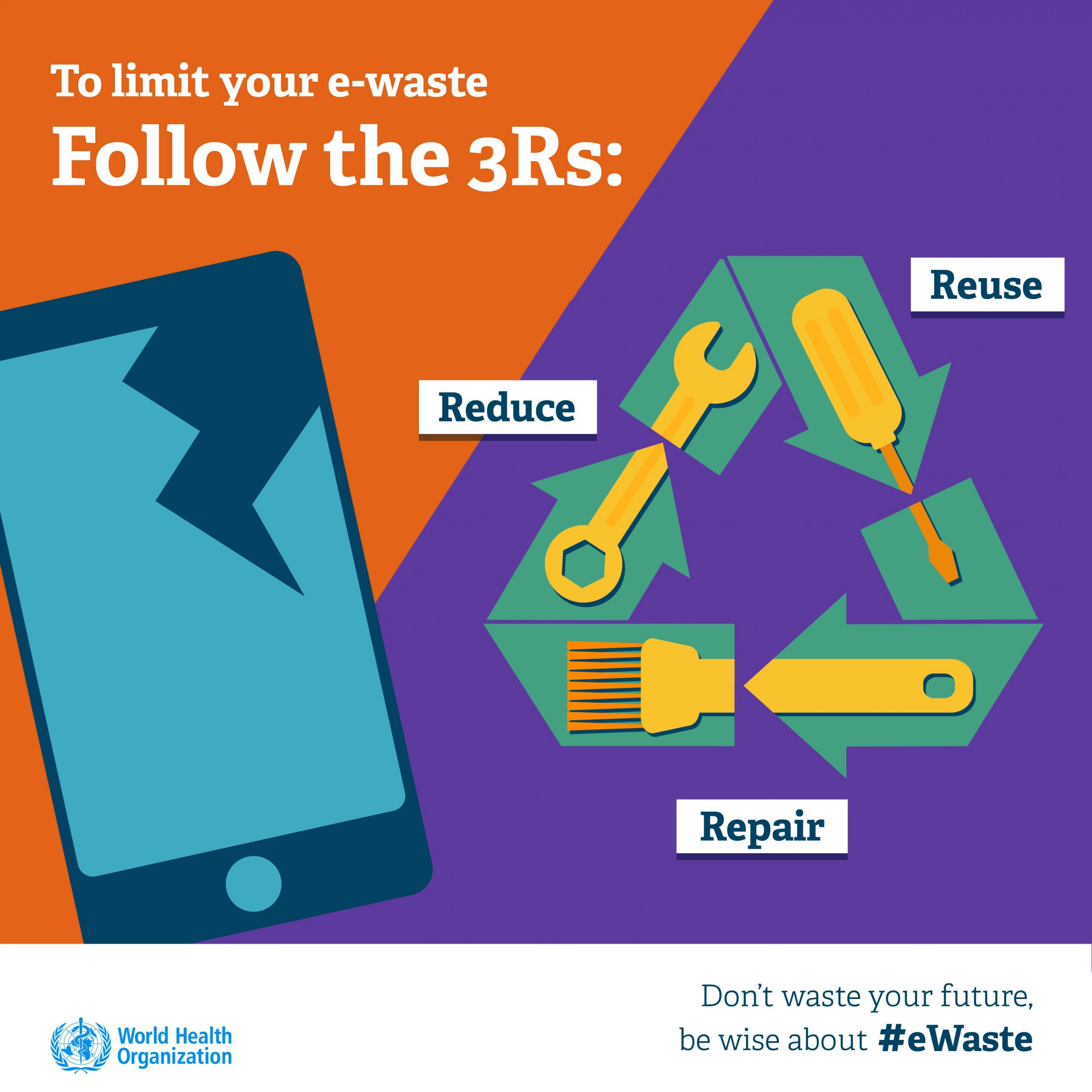17 JUNE 2021 /
WORLD HEALTH ORGANISATION (WHO) WARNS —
SOARING E WASTE AFFECTS THE HEALTH /
WHO REPORT on E-Waste and Child health calls for more action to protect children from growing health threat /
18 million children and adolescents and 12.9 million women are at risk from the adverse health outcomes linked to e-waste recycling, according to the WHO study released recently.
“With mounting volumes of production and disposal, the world faces what one recent international forum described as a mounting ‘tsunami of e-waste’, putting lives and health at risk.
In the same way the world has rallied to protect the seas and their ecosystems from plastic and micro plastic pollution, we need to rally to protect our most valuable resource – the health of our children – from the growing threat of e-waste,” said Dr. Tedros Adhanom Ghebreyesus, WHO Director General.
Children are often engaged in recycling as their small hands are more dexterous than those of adults. The others who go to school and play near e-waste recycling centres, where high levels of toxic chemicals, mostly lead and mercury damage their health.
The Report cautioned that the exposure to toxic e- waste affect the health and development of women and her unborn child. The adverse health effects include stillbirths, premature births, DNA change, neurological and other serious problems.
As per the report, the e-waste were surging by 21 percent in the five years period till 2019 with an estimated 53.6 million metric tonnes of e-waste.
Only 17.4 percent of e-waste produced in 2019 have reached for formal management or recycling and the rest was illegally dumped in low or middle-income countries.
The e-waste appropriately recycled prevented nearly 15 million tonnes of carbon dioxide equivalents being released into the environment, as per the estimates of Global E-waste Statistics Partnership (GESP).
Children and Digital Dumpsites, the report of the WHO calls for “effective action by exporters, importers and governments to ensure environmentally sound disposal of e-waste and to encourage the manufacture more durable quality electronic and electrical equipment.”
Every year, e-waste is dumped from high income countries to low-and middle-income countries where there may be no regulation or may be poorly enforced. Here e-waste is dismantled, recycled and refurbished and the workers, their families and the communities are in greater danger and exposed to the adverse health effects.
“Children and adolescents have the right to grow and learn in a healthy environment and exposure to electrical and electronic waste and its many toxic components unquestionably impacts that right,” said Dr. Maria Neira, Director, Department of Environment, Climate Change and Health, Wold Health Organisation(WHO).

